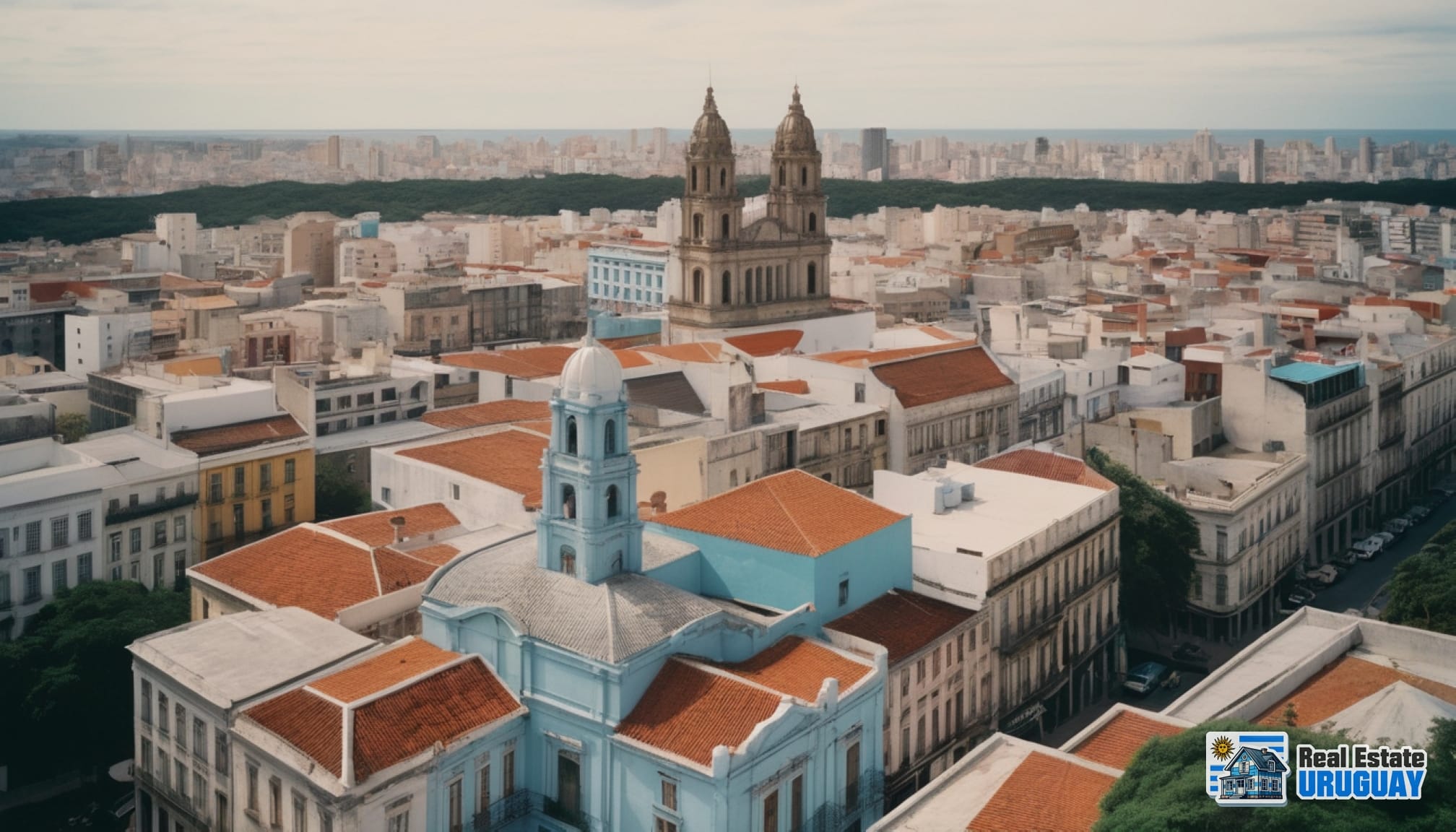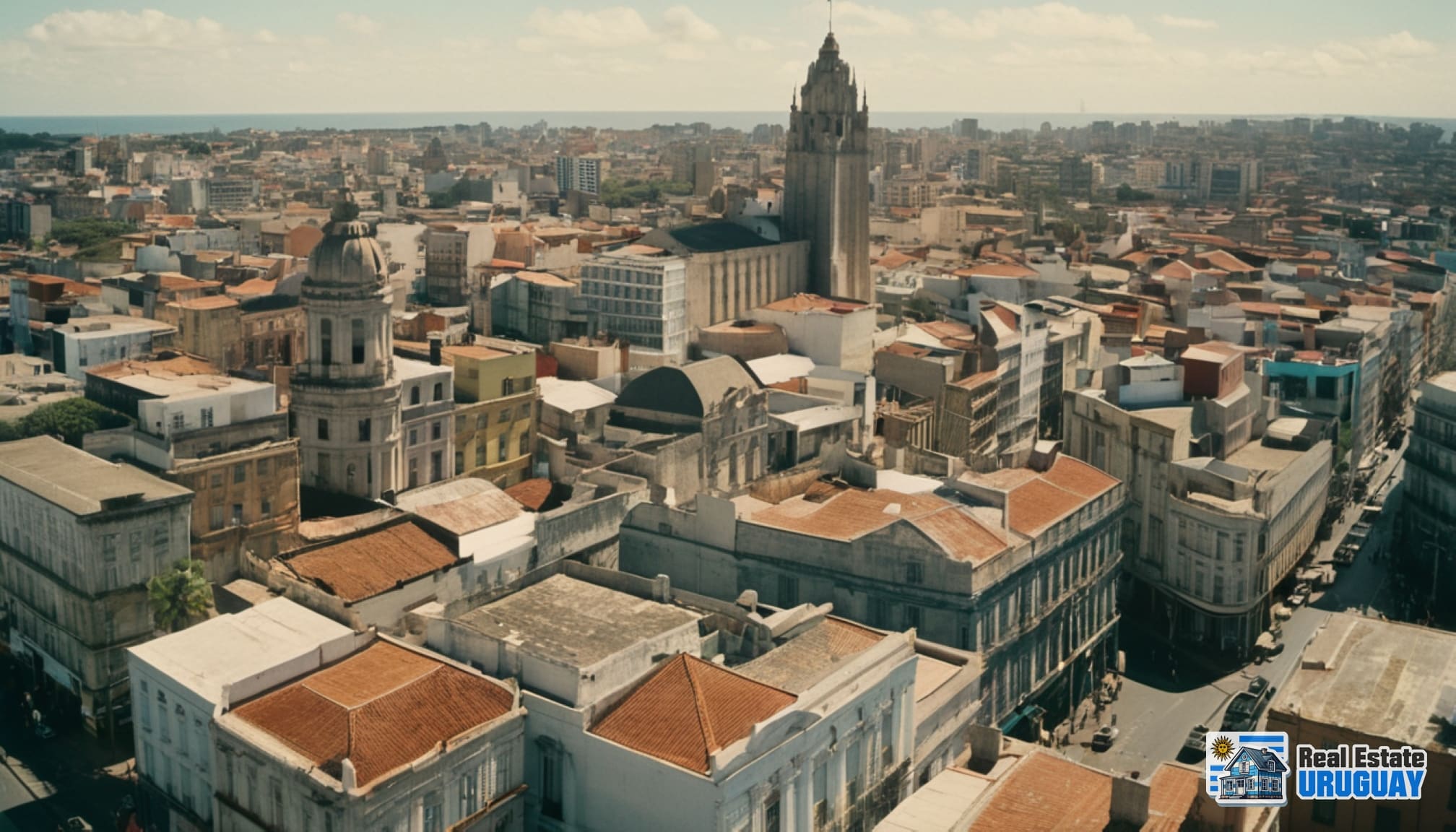Uruguay’s architectural landscape is a captivating blend of historical heritage and contemporary vision. From charming colonial structures to striking modern buildings, each structure tells a story of Uruguay’s architectural journey. The intricate charm of the Fortaleza de Santa Teresa and the grandeur of the Metropolitan Cathedral of Montevideo offer just a glimpse of Uruguay’s rich tapestry of architectural wonders.
As we delve deeper into this cultural mosaic, we discover a deep admiration for Uruguay’s architectural heritage. The country’s architectural evolution unfolds like chapters in a book, inviting us to discover the hidden treasures that define Uruguay’s unique architectural character. Each building whispers stories of the past and present, creating a symphony of design and history that envelops us in its beauty.

Exploring Uruguay’s architectural gems is like travelling back in time, with each structure serving as a portal to a different era. The mix of styles and influences paints a vivid picture of Uruguay’s rich architectural history, showcasing the creativity and craftsmanship of its builders over the centuries. Walking through the streets lined with these architectural marvels, one can’t help but feel a sense of awe and admiration for the intricate details and timeless elegance that define Uruguay’s built environment.
In Uruguay, architecture is not just about buildings; it’s a reflection of the country’s spirit and identity. The fusion of old and new, traditional and modern, creates a dynamic visual landscape that is both captivating and inspiring. Whether you’re strolling through the cobbled streets of Colonia del Sacramento or admiring the sleek lines of contemporary buildings in Punta del Este, Uruguay’s architectural tapestry leaves a lasting impression. Each building, each façade, is a piece of the puzzle that forms the mosaic of Uruguay’s architectural heritage, inviting us to appreciate the beauty and diversity of its built environment.
Colonial and neoclassical architectural wonders
Uruguay’s architectural landscape is a treasure trove of colonial and neoclassical wonders that reflect the country’s rich history and diverse influences. One outstanding example is the Fortaleza de Santa Teresa in Rocha, Uruguay. This historic fortress, with its colonial influences, offers a fascinating glimpse into the past. Its distinctive star-shaped wall architecture and breathtaking ocean views make it a true gem of Uruguay’s architectural heritage.
On the other hand, the Metropolitan Cathedral of Montevideo is a prime example of neoclassical elegance in Uruguay. The façade of the cathedral is adorned with two majestic towers and a dome that exude grandeur and sophistication. Inside, visitors can marvel at the tomb of Jose Artigas, surrounded by stunning stained glass windows that add to the cathedral’s charm and historical significance.

These architectural wonders not only showcase Uruguay’s architectural prowess, but also highlight the enduring legacy of colonial and neoclassical styles in the country’s built environment. Each structure tells a unique story and provides a window into Uruguay’s past, making them must-see destinations for history and architecture enthusiasts alike.
Twentieth-century architectural marvels
Uruguay’s twentieth-century architectural landscape is a treasure trove of creativity and innovation. A standout jewel is the Legislative Palace of Uruguay, inspired by Italian Renaissance design. Inside, you’ll find intricate ceilings and a majestic marble staircase that exude elegance and grandeur.
Another notable building is the Palacio Salvo, a stunning example of Art Deco style. Originally designed as a hotel, it now houses the Montevideo Tango Museum. Its central tower, complete with lighthouse, adds a unique touch to the city’s skyline.
These architectural wonders are not only pleasing to the eye, but also tell a story of Uruguay’s rich cultural heritage and architectural ingenuity. They skilfully blend historical influences with modern aesthetics, creating a seamless and captivating fusion that is sure to leave visitors in awe.
Cultural and artistic architectural treasures
If you delve into Uruguay’s architectural realm, you’ll discover a wealth of cultural and artistic wonders that enrich the country with their captivating and distinctive designs. The Teatro Solís stands as a testament to Uruguay’s commitment to preserving its rich heritage. This historic theatre, with its blend of neoclassical and eclectic styles, has been a hub for cultural performances since its inauguration in 1856, echoing with the memories of the past.
Another jewel in Uruguay’s architectural crown is the restored Club Uruguay, a masterpiece that seamlessly blends Neo-Renaissance and Art Nouveau elements. Its grand hall, decorated with exquisite paintings and shimmering chandeliers, continues to host events and gatherings, preserving its historical and artistic importance for generations to come. The dedication to maintaining these architectural treasures demonstrates Uruguay’s commitment to honouring its past while embracing the present.
Architectural landmarks with unique features
Uruguay’s architectural marvels have distinctive features that set them apart from the rest of the world. Take the Colonia del Sacramento lighthouse, for example. Its unique circular shape and spiral staircase offer visitors a unique experience. From its vantage point, you can enjoy a breathtaking panoramic view of the city and the river, making it a must-see for architecture enthusiasts.
Another gem not to be missed is the Parroquia de la Sagrada Familia. This stunning structure boasts neo-Gothic architecture adorned with exquisite stained glass windows and sculptures. Inside, you’ll be greeted by a mesmerising façade with a rose window and intricate stained glass that will leave you in awe. It’s a true testament to Uruguay’s rich architectural heritage.
More than just buildings, Uruguay’s architectural wonders are living pieces of history that captivate all who encounter them. Whether you explore the unconventional design of the Lighthouse or marvel at the intricate details of the Parroquia de la Sagrada Familia, you’re sure to be inspired by the creativity and craftsmanship on display.
Institutional and public architectural gems
In Uruguay, public and institutional buildings offer a glimpse of the country’s rich cultural heritage through an intriguing mix of architectural styles. An outstanding example is the Italian Hospital of Montevideo, designed by Luis Andreoni in 1890. This architectural marvel beautifully blends neoclassical elegance with Roman-inspired designs, with majestic columns reminiscent of ancient Rome exuding a timeless sense of sophistication. As a healthcare facility for the citizens of Montevideo, the Italian Hospital is also a remarkable testament to the enduring beauty and grace of neoclassical architecture.

The harmonious fusion of neoclassical elements with Roman influences in the Italian Hospital of Montevideo encapsulates the essence of Uruguay’s architectural diversity and historical significance. This architectural gem not only provides a window into the country’s past, but also sets a vision of architectural excellence for the future. The intricate details and grandeur of the building reflect a deep appreciation of classical aesthetics and showcase a level of craftsmanship that is truly awe-inspiring.
Designed with meticulous care and attention to detail, the Italian Hospital of Montevideo stands as a beacon of architectural ingenuity in Uruguay. Its neoclassical façade, adorned with Romanesque columns and exquisite ornamentation, speaks of a bygone era while remaining relevant to the modern world. Visitors are welcomed into a space where history and innovation converge, offering a unique experience that celebrates the country’s architectural heritage in a truly remarkable way.



